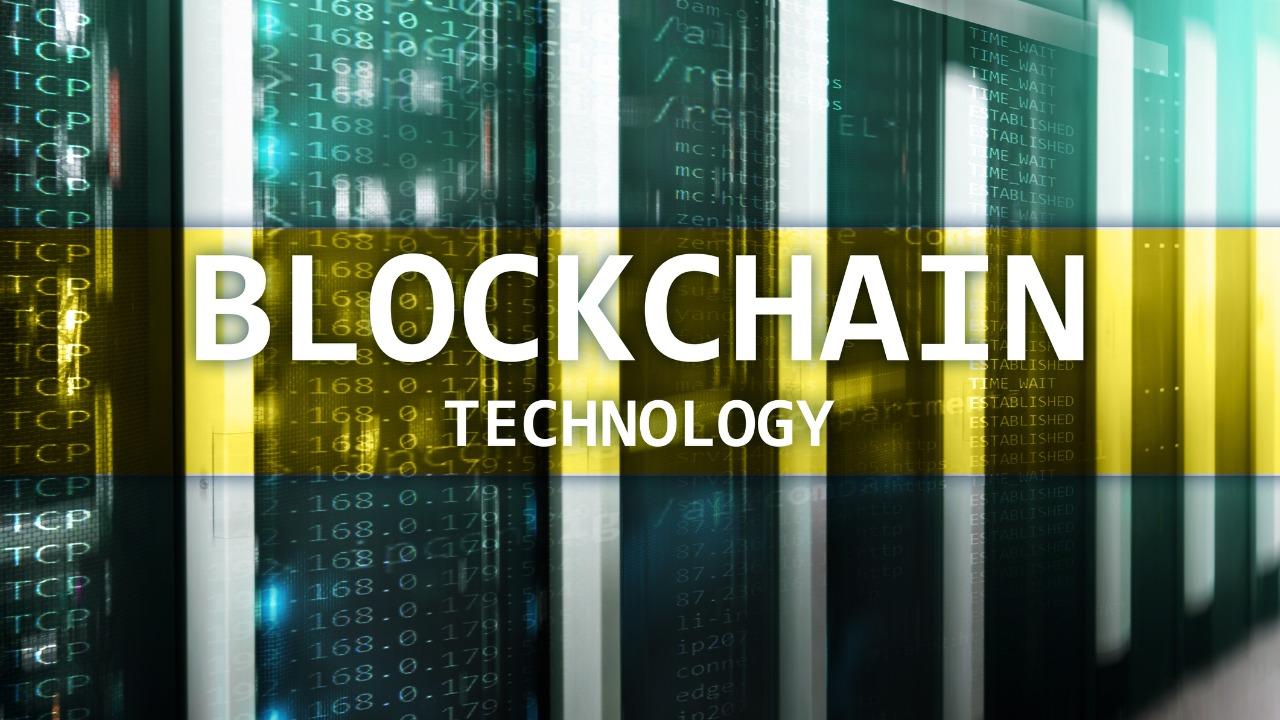What is Blockchain Technology?
The ownership history of digital assets is kept on a decentralized, distributed ledger using blockchain technology. Blockchain technology is a viable disruptor for markets including payments, cybersecurity, and healthcare because no data stored there can be changed. Discover its history, use, and definition.
Blockchain Technology: What Is It?
Through the use of a decentralized network and cryptographic hashing, blockchain, also known as distributed ledger technology (DLT), makes the history of any digital asset transparent and unalterable.
It’s easy to understand how blockchain technology works by making the comparison to a Google Docs page. A Google Doc is not duplicated or transferred when it is shared with a group of people; rather, it is simply distributed. As a result, a decentralized distribution network is established, allowing everyone to simultaneously access the basic document. All revisions to the document are being logged in real-time, making changes totally transparent, and no one is locked out while waiting for changes from another party. The fact that original information and data on the blockchain cannot be edited after being written, increasing its level of security, represents a crucial gap to be aware of.
Of fact, a blockchain is more complex than a Google Doc, but the comparison is useful since it highlights important blockchain concepts:
WHAT BLOCKCHAIN MEANS: BLOCKCHAIN EXPLAINED
- In a blockchain, encrypted blocks of data are recorded digitally.
- A blockchain is a type of database or digital ledger where encrypted blocks of data about digital assets are kept and chained together to create a time-based single source of truth for the data.
- Instead of being copied or transferred, digital assets are distributed.
- Because digital assets are decentralized, several parties can govern them and access them in real time.
- Blockchain ledgers are transparent; all modifications are recorded, upholding credibility.
- Blockchain technology is a top choice for practically every industry since its ledgers are open to the public and built with built-in security features.
Blockchain: Why is it important?
Due to its ability to scale transparency, eliminate fraud, and reduce security threats, blockchain is an incredibly revolutionary and exciting technology.
Blockchain technology gained notoriety through its connection to cryptocurrencies and NFTs, but it has subsequently developed into a management tool for a variety of international companies. Blockchain technology is currently being used to innovate games, secure healthcare data, provide transparency for the food supply chain, and fundamentally alter how we manage data and ownership.
How Do Blockchains Function?
Blocks, nodes, and miners are the three key components of the proof-of-work blockchain system.
How Do Blocks Work?
Each block in a chain is composed of three fundamental components:
- The block’s data.
- “Number used only once” is the nonce. In the blockchain, a nonce is a whole integer that is generated at random when a block is created and used to produce the block header hash.
- A hash in a blockchain is a number that is inextricably linked to the nonce. These values must begin with a huge number of zeroes for Bitcoin hashes. (i.e., be extremely small).
The cryptographic hash is produced by a nonce at the beginning of a chain. Unless it is mined, the data in the block is regarded signed and permanently bound to the nonce and hash.
What Does a Blockchain Miner Do?
Every block on a blockchain has its own distinct nonce and hash, but it also refers to the hash of the block before it in the chain, making it difficult to mine a block, especially on long chains.
Finding a nonce that produces an approved hash is a tremendously difficult arithmetic issue, and miners employ specialized software to solve it. Since the hash is 256 bits but the nonce is just 32 bits, it takes around four billion nonce-hash combinations to get the correct one. Miners claim to have discovered the “golden nonce” at that point, and their block is added to the chain.
Any block earlier in the chain may only be modified by re-mining every block following it, not simply the one with the modification. Because of this, it is very challenging to abuse blockchain technology. Since identifying golden nonces takes a lot of effort and processing power, think of it as “safety in math.”
What Does Blockchain Decentralization Mean?
Decentralization is one of the key ideas behind blockchain technology. The chain cannot be owned by any one computer or entity. Instead, it functions as a distributed ledger through the network’s chain of nodes. Any type of electronic device that saves copies of the chain and keeps the network running can be a blockchain node.
Every node has a unique copy of the blockchain, and for the chain to be updated, trusted, and confirmed, the network must algorithmically approve every newly mined block. Due to the transparency of blockchains, every transaction in the ledger can be easily verified and inspected, resulting in built-in blockchain security. An exclusive alphanumeric identification number is supplied to each participant, and this number displays their transactions.
The blockchain is able to maintain integrity and foster user trust by fusing public information with a system of checks and balances. Blockchains are essentially the scalability of trust through technology.
HOW BLOCKCHAINS FUNCTION
- A digital database known as the blockchain is made up of encrypted data blocks that are “chained” together and protected by challenging arithmetic puzzles.
- Since the blockchain keeps a highly accurate and secure record of prior acts, the math issues requiring matching nonces and hashes are virtually impossible to alter afterwards.
- The blockchain is equally dispersed among various decentralized nodes, preventing ownership or control by any one entity.
Blockchain Uses
Using Blockchain Technology
Blockchain is utilized for more than just money transfers. The system is adaptable to needs outside of one area of expertise due to its secure and transparent nature. Every day, sectors like energy, logistics, education, and more make use of blockchain’s advantages.
PRIMARY USES & APPLICATIONS OF BLOCKCHAIN
- Cryptocurrency
- Cybersecurity
- Record Keeping and Accounting
- Supply Chain
- Healthcare
Blockchain versus Cryptocurrencies
Cryptocurrencies may be the most well-known (and contentious) application of blockchain. Digital currencies (or tokens) like Bitcoin, Ethereum, or Litecoin are examples of cryptocurrencies. These currencies can be used to pay for products and services. Cryptocurrencies can be used to pay for anything from your lunch to your future house, just like a digital version of currency. Online transactions are always tracked and secured because, unlike cash, cryptocurrencies employ blockchain to serve as both a public ledger and an improved cryptographic security system.
For instance, although the terms “Bitcoin” and “blockchain” are sometimes used interchangeably, they nonetheless relate to different things. In 2009, Bitcoin, a distributed ledger-based cryptocurrency system, became the first blockchain application. As a result, Bitcoin became the original “blockchain.” Both entities came together because of the blockchain feature that is being utilized to store this new digital currency, which helped them gain notoriety quickly. The Bitcoin cryptocurrency only describes the currency itself, whereas the Bitcoin blockchain only explains the technology that houses the cash.
HOW DO CRYPTOCURRENCIES WORK?
Digital money known as cryptocurrencies uses blockchain technology to safeguard and record each transaction. A cryptocurrency, like Bitcoin, can be used as a digital form of cash to pay for smaller purchases like groceries and clothing as well as larger ones like cars and houses. When purchasing an item, it can be transferred digitally using one of the many available digital wallets or trading platforms, and the blockchain will record the transaction and the new owner. The allure of cryptocurrencies is that every transaction is recorded in a public ledger and encrypted using cryptography, creating an unquestionable, time-stamped, and secure record of every payment.
More than 20,000 cryptocurrencies exist now, with Bitcoin accounting for the majority of the market worth of this $1 trillion total. Over the past few years, these tokens have skyrocketed in popularity, with the price of one Bitcoin varying between several thousand dollars.
Here are some of the primary causes behind the rise in popularity of cryptocurrencies recently:
- The security of blockchain makes theft much more difficult because each bitcoin has a unique, unquestionable identification number associated with one owner.
- The necessity for distinct currencies and central banks is diminished by cryptocurrencies. Cryptocurrency may be sent to anyone and anywhere in the world using blockchain technology without the need for currency conversion or meddling from central banks.
- People can become wealthy thanks to cryptocurrencies. Some early adopters have become billionaires as a result of speculation driving up the price of cryptocurrencies, particularly Bitcoin. It has to be seen whether this is indeed a good thing, as some detractors think that speculators are not thinking about the long-term advantages of crypto.
- Corporations began to accept the concept of a blockchain-based digital currency for payments. Tesla declared in February 2021 that it will spend $1.5 billion on Bitcoin and accept it as payment for its vehicles.
Of course, there are lots of good reasons to oppose digital currencies based on blockchains. The market for cryptocurrencies isn’t very well regulated, to start. Many governments jumped into cryptocurrencies quickly, but few have a firm set of codified laws governing it. Additionally, because of speculators, cryptocurrency is very volatile. While the majority has still lost thousands of dollars, certain people have become extremely wealthy as a result of the lack of stability.
The future of digital currency is still up in the air. For the time being, it appears that blockchain’s stratospheric rise is less hype and more beginning to take root in reality. Blockchain is showing potential outside of Bitcoin, even though it is still making progress in this brand-new, highly adventurous industry.
A Blockchain Platform: What is it?
A blockchain platform is a means by which users can communicate with a blockchain and its network, as opposed to a blockchain network, which describes the distributed ledger technology. Blockchain platforms are developed to be scalable and to function as extensions of an existing blockchain infrastructure, enabling data interchange and service powering straight from this framework.
Ethereum, a software platform that holds the cryptocurrency known as Ether, is an illustration of a blockchain platform. Users of the Ethereum platform can also develop smart contracts and programmable tokens that are directly based on the Ethereum blockchain technology.
Ethereum Blockchain: Alternative to Bitcoin
Blockchain technology, which was initially developed for Bitcoin to run on, has long been linked to cryptocurrencies, but due to its transparency and security, it is now becoming more widely used in a variety of fields. Much of this growth can be attributed to the development of the Ethereum blockchain.
A white paper by Russian-Canadian developer Vitalik Buterin from the end of 2013 outlined a platform that combined typical blockchain functions with one significant modification: the running of computer code. The Ethereum Project was therefore established.
The Ethereum blockchain now enables programmers to design complex applications that can speak to one another through the network itself.
It’s important to remember that the Ethereum blockchain and the Ethereum cryptocurrency are two distinct entities, similar to how Bitcoin is.
Tokens
Any type of digital asset can be represented by a token, which Ethereum programmers can then use to track ownership and carry out certain functions.
Music files, contracts, concert tickets, or even a patient’s medical records are examples of tokens. Non-fungible tokens (NFTs) have gained popularity in recent years. NFTs are distinct tokens built on the blockchain that store digital media. (like a video, music or art). (like a video, music or art). Each NFT has the capacity to confirm the item’s original ownership, history, and authenticity. Because they enable a new generation of digital creators to buy and sell their works while receiving correct credit and a fair share of earnings, NFTs have become enormously popular.
The potential for blockchain to permeate other industries including media, government, and identity security has increased due to newly discovered uses for the ledger technology. Thousands of businesses are presently investigating and creating ecosystems and products that only rely on the growing technology.
By enabling businesses to test cutting-edge technology like peer-to-peer energy distribution or decentralized news media platforms, blockchain is upending the status quo of innovation. The applications for the ledger system will only develop along with technology, much like the definition of blockchain.
Smart Contracts
A smart contract is what? These are digital, programmed contracts that, when certain conditions are satisfied, automatically carry out or record pertinent activities. A blockchain network’s lines of code are used to directly govern each contract. As a result, once a contract is signed, its terms are final and cannot be changed. Smart contracts can be produced and used on blockchain systems including Bitcoin, Cardano, EOS.IO, and Tezos even though they are essential to the Ethereum platform.
Applications of Blockchain in Industries
As was noted, the application of blockchain technology is expanding far beyond its origins in the cryptocurrency industry. In fact, the technology is having some kind of impact on virtually every sector of the modern economy.
Blockchain technology is not only transforming the banking and finance industries, but also healthcare, record keeping, smart contracts, supply networks, and even voting. Even while the possibilities of such technology are constantly expanding, not even close to all of the uses of blockchain technology have been discovered yet.
At Los Angeles Software Developers, our blockchain developers can assist you with your next blockchain, web3, crypto, or metaverse project. We have the best blockchain developers in LA. Contact us today to discuss your next project!




